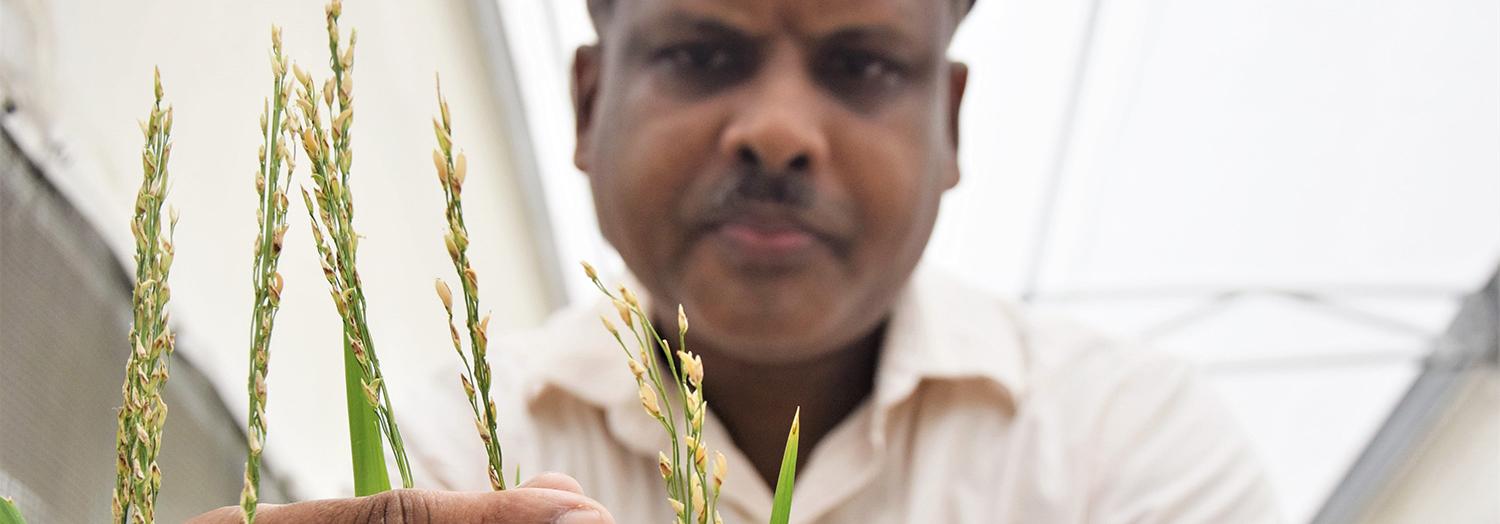Rice biofortification to increase zinc in the rice grain
IRRI Research Project Overview

Patterns of diversity in leaf microbes across highly differentiated populations of chocolate plants.
Quick LinkThe discovery and characterization of 10 novel Rhodobacter capsulatus bacteriophages.
Quick LinkIncreasing zinc content within the rice grain to combat global nutrient deficiencies.
Quick LinkWhat would a world without chocolate look like? Climate change is threatening many species, including Theobroma cacao, or the chocolate tree. With cacao being located in regions most susceptible to high climate variability, along with its natural tendency to be particularly susceptible to disease and declining production, it is essential to explore options to sustain crop production in the future. The current research project attempts to characterize the microbial diversity within and across various populations of Theobroma cacao.
Leaf samples for DNA extraction were previously collected and sequenced from two genebank sites, one located in Trinidad and the other in Costa Rica. With access to 200 individual sequencing files across 11 distinct populations of Theobroma cacao, there is sufficient data to find microbial relations and comprise a pan-microbiome for cacao.With a significant amount of sequencing data previously assigned to the cacao genome, the unmapped, or unassociated, genomic sequences can be extracted to comprise the meta-genome of the microbiomes. Using an efficient k-mer based classification system combined with a probability estimating algorithm (KrakenUniq), I will be able to taxonomically identify sequencing data from 200 cacao samples.
Furthermore, with this data, I can look at the relatedness and alpha/beta diversity. While alpha diversity describes the species richness within a particular region or ecosystem, beta diversity explores the change in species diversity between ecosystems. There are a number of ways for microbes to enter the plant, including through the root system, stomatal openings in the leaf surface, deep tissue wounds, and parental inheritance. Many factors can influence the microbial variety within the plant, such as differentiating environmental exposures and hormonal signaling molecules varying among individuals. In the case of this project, samples of individuals collected from two isolated sites, Trinidad and Costa Rica, are predicted to show varying diversity levels in comparison to one another. In continuation, I should be able to see a range in diversity across populations, as previous accessions of microbial organisms may remain present within their relative populations.
Finally, I can identify differential representation of metabolic pathways within the microbiomes of several cacao populations. Although plants typically produce a range of antimicrobial molecules for immunity, many hormonal compounds are recognized by a wide range of organisms. Furthermore, there is evidence suggesting that plants are selective in recruiting their specific microbiomes, often signaling microbes containing particular metabolic capabilities. By mimicking a reverse RNA-Seq method to associate genomic information with metabolic data, we can detect specific life sustaining chemical intermediates attributed with the cacao microbiome.
What would a world without chocolate look like? Climate change is threatening many species, including Theobroma cacao, or the chocolate tree. With cacao being located in regions most susceptible to high climate variability, along with its natural tendency to be particularly susceptible to disease and declining production, it is essential to explore options to sustain crop production in the future. The current research project attempts to characterize the microbial diversity within and across various populations of Theobroma cacao.
As more viruses are being discovered, there is a demand to understand the genetic composition of these particles. Prior to this study, none of the genes in bacteriophages that infect Rhodobacter capsulatus have been tested for gene function. Gene 18 of R. capsulatus bacteriophage MrWorf shows potential for encoding an ATP dependent DNA helicase. This is an enzyme which is vital in biological processes such as repairing DNA, replication, and recombination. The gene of interest was amplified via PCR using gene specific primers, cloned into the pET-14b vector, and transformed into competent cells. The cells were induced by IPTG to express the protein product of gene 18 and after purification by HisPur TM Cobalt Spin Column, SDS-PAGE analysis revealed purification to be successful. Further work will need to be conducted to reveal the relationship between gene 18 protein product and ATP-dependent DNA helicase.
While roughly 820 million people suffer from malnutrition, another 1.3 billion people suffer nutrient deficiencies without proper access to whole foods. Over 50% of the world's population relies on rice as a staple food source and yet, rice is deficient in many essential macro/micronutrients necessary for survival, including Zinc. Over the course of two months, I worked alongside researchers to study hybridization of high zinc rice varieties at the International Rice Research Institute.
